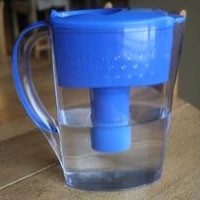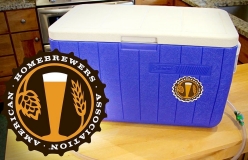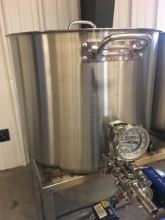Sustainable Homebrewing
Homebrewing can be an incredibly rewarding hobby. Like commercial brewing, homebrewing requires resource inputs, such as water, energy, and ingredients, and can result in environmental impacts. This presents opportunities to engage in more sustainable homebrewing that can result in environmental, social, and financial benefits.
What is Sustainability and How Does it Relate to Homebrewing?
Sustainability is defined as meeting the needs of the present without compromising the ability of future generations to meet their own needs. In short, sustainability is about preserving the future. Many people think sustainability is simply about taking environmental responsibility. While the environment is one crucial aspect, sustainability actually considers three different pillars: economic vitality, social impact, and environmental health. Those three aspects are typically summarized as people, profit, and planet, which is also known as the triple bottom line.
So, why is sustainability important for homebrewers? First, sustainable operations help protect the environment and natural resources needed by future generations of brewers by reducing environmental impacts. While large scale spirit operations have the ability to significantly impact community sustainability and it is easy to think that one person does not make a difference, collective action from the homebrewer’s community has the opportunity to make a major impact on reducing environmental impacts. Lastly, practicing sustainability as a homebrewer can actually make the hobby cheaper, it can drive innovation and cooperation in the community, and it can make the process of brewing more enjoyable.
Those that begin the hobby often find themselves enjoying the craft for years. For those that do decide to embark on the journey of brewing beer at home, there are excellent resources available, including John Palmer’s book How to Homebrew and Charlie Papazian’s book The Complete Joy of Homebrewing. These books have both long been standards for novice and experienced homebrewers as well as an excellent place to start to learn the craft. Another excellent resource to learn homebrewing is Amelia Slayton Loftus’s book Sustainable Homebrewing: An All-Organic Approach to Crafting Great Beer. Loftus’s book teaches the craft of beer brewing in a sustainable manner.
The accordions below offer different tips and tricks to enhance the sustainability of your homebrewing operation.
Enhancing Sustainability of Your Homebrewing
Water is the most important resource for brewers. It is the main ingredient, and a brewer cannot make beer without it. Much like good wine cannot be made from bad grapes, good beer cannot be made without a good source of water. As a result, it is important for brewers to minimize water waste and keep water sources clean. Some suggestions for conserving water are:
Reuse Water as Much as Possible
Water that is used for heat exchange and cooling of wort can be saved and reused for cleaning, rinsing, or sanitizing equipment. Pumps that recirculate water during heat exchange are also a great way to save time and minimize water waste. Watering plants or gardens is another great way to utilize water that might normally go to waste.
Dispose of Wastewater Properly
Wastewater should always go down the sewer drain where it can be treated properly before being released back into the environment. One should never simply pour wastewater down a storm drain. Doing so could result in contamination of local water sources.
Use Tap Water for Brewing Beer
Filtration systems, such as carbon filtration, are relatively inexpensive and can improve the taste of tap water used for brewing. Using tap water also minimizes expenses by preventing the purchase of store-bought water. Additionally, by using tap water rather than store bought sources, one can prevent plastic waste in the form of water bottles.

Carbon Filtration Pitcher Filter

Carbon Filtration Faucet

Water Hose Carbon Filtration
Beer cannot be brewed without an energy source. Gas, electricity, or some combination of the two is needed for the brewing process. However, there are ways to minimize energy usage and improve the brewing process at the same time. Some suggestions are:
Equipment that Maintains Heat when Mashing Grains

Cooler systems or thick-walled pots are excellent choices when mashing grains. Systems that efficiently maintain a constant temperature during the mash and can be reused countless times are often a better financial investment. Investing in a high-quality mash tun when beginning to brew can save money, time, and prevent waste over the long term. The American Homebrewers Association has instructions as well as a video that detail how to build your own cooler mash tun.
Pot Size is Important

When heating strike water, it is important to use the right size pot and heat source for the job. Small pots should not be used on large heat sources. Conversely, large pots should not be heated on small heat sources. When using an outdoor heat source, such as gas, it is important to use the heat source in a location free from drafts or wind that may increase heating time and energy consumption. Much like the mash tun, investing in a quality pot for heating water can actually save money over the long term. Quality pots will heat evenly and efficiently, which will reduce the amount of time and energy needed to heat water to the correct temperature. Shown here, is an example of a quality pot for brewing. It is well constructed, heats evenly, and holds temperatures well. This pot has a thermometer and ball valve installed, which is beneficial but certainly not necessary.
Insulate or Jacket Fermentation Vessels
Insulating fermentation tanks will help to maintain the proper temperature for fermentation without the need of external heat or cooling sources. Jackets specially designed to insulate carboys and other fermentation vessels are typically easy to find, inexpensive, and easy to use. Insulation materials found at local home improvement stores can also be used, and they are also relatively inexpensive.
Use a Good Thermometer to Minimize Energy Use
With a good thermometer, a brewer will know exactly when to turn off the heat being used for hot liquor, mash tuns, or boil kettles. When the strike water or mash reaches the correct temperature, any heat or energy source can be turned off. Many instant-read digital thermometers can be found at local stores. They are also relatively inexpensive, and give an accurate reading quickly, which minimizes heat loss. One added benefit is that those thermometers can also be used for cooking and other uses around the house.
One cannot brew without the right ingredients. Brewers have access to numerous ingredient options. Choosing quality ingredients from trustworthy suppliers is of the utmost importance. Not only can the ingredients used have a major impact on the quality of beer being brewed, but they can also have an impact on the environment and sustainability. Some tips for practicing sustainable grain sourcing include:
Organic and Sustainable Suppliers
Choose suppliers that grow and produce ingredients organically and sustainably.
Local Suppliers When Possible
As much as possible, choose suppliers that are local or close to your brewing location. By choosing local, a homebrewer can both support the local economy and minimize transportation of ingredients. Ingredients that must be shipped long distances can increase fossil fuel usage and carbon emissions.
Brew with Grains Rather than Malt Extracts
Brew with grains rather than malt extracts. Beginning brewers typically start by using extracts, and good beer can definitely be brewed using malt extracts. However, malt extracts require more energy to produce than all grain brewing. If using extracts, try to choose sustainably produced extracts without additives, such as corn syrup. Once comfortable with the process, work toward brewing with grains. All grain brewing is incredibly rewarding and gives the brewer full control over their process.
Proper equipment is needed for each batch of beer. Some of that equipment is unique to the brewing process, but much of it can be found in the kitchen. Much like choosing water and ingredients, the right equipment can improve the brewing process, make quality beer, last for years, and increase a homebrewer’s sustainability. Some tips for choosing equipment include:
Use Metal or Glass Equipment
Whenever possible, use metal or glass equipment. Metal and glass are easier to clean, sanitize, and they last much longer than plastic alternatives.
Use Recycled / Recyclable Materials
Choose equipment that is made from recycled material and that can be recycled once it is no longer useful.
Maintain Your Equipment
Take care of and maintain your equipment. With proper care, maintenance, and storage, your equipment could last a lifetime. Northern Brewer has good advice and tips on proper cleaning of equipment. John Palmer’s, How to Brew, has excellent advice on properly cleaning metal pots and equipment.
Dispose of Unusable Equipment Properly
When a piece of equipment is no longer able to be used, dispose of it properly. Recycle every piece of equipment that can be, which means it is important to purchase equipment constructed of recyclable material.
Purchase and Donate Used Equipment
When possible, source used or recycled equipment. Purchasing used equipment is cheaper, and it prevents waste from entering landfills. Sell or donate equipment that is no longer needed or useful.
Materials management is simply properly disposing wastes and by-products with the goal of reducing materials entering the landfill. Brewing beer produces liquid and solid by-products. Liquid waste includes any unused wort, water, or sanitizer. Solid waste includes spent grains, yeast cells, hops, equipment, and packaging materials. It is important to dispose of these waste products properly. Below are some tips for the reuse or disposal of waste material.
Yeast
- Collect, store, and reuse yeast after a batch of beer has fermented. Yeast cells are typically viable for use in about five to ten different batches of beer. The process of collecting yeast from one batch of beer and using them again in another batch is known as re-pitching. Re-pitching occurs in both breweries and distilleries throughout the world, and it is a process that homebrewers can engage in as well. Re-pitching helps brewers save money as well as prevent waste and contamination. After collecting the yeast cells, simply store them in the refrigerator. If the yeasts are not going to be used within two to three weeks, it is best to freeze the cell culture. Re-pitching also encourages a homebrewer to brew more frequently as cell viability diminishes over time. Brewers should also test collected samples of yeast cells for viability by placing them in yeast starter and monitoring for activity before pitching them.
- Add spent yeast to compost piles or gardens as a nutrient source.
- Do not dump yeast down the drain. Too much yeast in the water supply can diminish the natural microorganisms present in water, and they can make water treatment difficult.
Grains
- Reuse spent grains for baking. The majority of solid waste from brewing comes in the form of spent grains. While spent grains cannot be used for brewing, they can be used for baking. Homebrewers can make baked goods themselves or donate those grains to other bakers in the community. Here is an example of a bread recipe that utilizes spent grains. Homebrew Talk is also an excellent source for spent grain recipes, such as this recipe for banana nut bread.
- Another option for grain disposal is to partner with local farmers. Farmers can use spent grains as livestock feed.
- Spent grains can also be used to make compost. Brewers can keep spent grains to make their own compost, or they can partner with local farmers, plant nurseries, or others in the community that make compost.
Community and partnerships are a huge part of the homebrewing process. Getting to know others in the hobby is part of what makes homebrewing so much fun. Homebrewers can get to know each other online through websites and forums, by going to brewing events, by talking to brewers at local breweries, or by joining a local homebrewing club. Getting to know others in the brewing community can lead to better beer, lifelong friendships, learning, innovation, and greater enjoyment of the brewing craft. Becoming part of a homebrewing club is a great way to learn and improve one’s brewing abilities. Additionally, being part of a homebrew club is a great way to share, sell, and trade equipment. Overall, becoming part of the brewing community can lead to better beer and lowered expenses. As a result, it is important for homebrewers to actively engage in the brewing community for both themselves, others, and the future of the craft, in general. To find a homebrewing community near you, visit the American Homebrewers Association Homebrew Club Database and Search Engine
If you are new to homebrewing, the three resources below are great starting points in understanding homebrewing basics. When trying to understand a concept, technique, or system design, these books can get you from grain to glass.
- The Complete Joy of Homebrewing – Charlie Papazian
- How to Brew – John Palmer (available for purchase on Amazon)
- Beer: Tap into the Art and Science of Brewing – Charles Bamforth
Whether you’re looking to brew organic beer or developing techniques that reduces your impact on the environment, these three links provide concepts and ideas on how to do your part.
- Sustainable Homebrewing: An All-Organic Approach to Crafting Great Beer – Amelia Slayton Loftus
- “10 Must-do Steps for Sustainable Homebrewing” by Abbey Quillen
- “Sustainable Homebrewing, 10 Ways to Make Environmentally Friendly Beer at Home”
From finding local clubs, discussion boards, supplies discounts and/or finding local shops, the American Homebrewers Association (AHA) is your one stop shop. The AHA is the nation’s non-profit advocacy group for the homebrewing industry. AHA membership does require a fee.
Brewers friend is a software tool designed to help homebrewers design recipes, track metrics on brew day, and record information on each beer you brew. There are several companies that have similar products, this is just one example of many ways to develop, record, and change recipes from batch to batch.
Northern Brewer is one of the leading online retailers for homebrewers. If you are looking for ingredients, equipment, or advice, Northern Brewer is a great resource.
Homebrew Talk is an online forum designed around homebrewing. If you have a question about anything related to homebrewing you can ask or find your answers on this online forum.
- Homebrew Talk (Recipes and Forum)
This Page Last Updated: September 6, 2023 at 1:39 PM